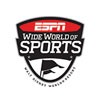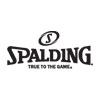AAU JUNIOR OLYMPIC GAMES REVIVE 70-YEAR-OLD MEMORIES
07/24/2019
Merrill Oxley, 83 of Greensboro, NC competed in the 1949 AAU National Junior Olympic Track Meet winning a silver medal
Article originally posted at www.greensboro.com
GREENSBORO — The overstuffed brown chair in the sunroom of the neat-as-a-pin home on Sainsbury Lane might very well be the world’s most comfortable time machine.
Lost in thought, Merrill Oxley looks out through the Venetian blinds and into the past, the years burning away like morning fog, the memories taking shape, becoming focused.
“Seventy years,” he murmurs. “Can you believe it? What’s so unique, at least to me, is it’s 70 years ago. And I can still get up and get around, and now the Junior Olympics are coming to town.”
Greensboro will host the 2019 Amateur Athletic Union Junior Olympic Games, an 11-day festival featuring 20 sports for boys and girls ages 4 to 19.
It’s the first time the city has hosted the AAU Junior Olympics, a sprawling event expected to draw an estimated 16,000 athletes, 2,500 coaches and account for roughly 34,000 hotel room nights from July 24 through Aug. 3.
It’s the biggest sporting event, in terms of participants, the city has hosted, according to Henri Fourrier, president and CEO of Greensboro’s Convention & Visitors Bureau.
And it’s a heck of a lot bigger than the first A.A.U. National Junior Olympics in 1949, a track and field meet that the 83-year-old Oxley competed in as a 13-year-old boy.
Glory days
Oxley still has the silver medal he won in the high jump at that meet at Baldwin Wallace College in Berea, Ohio, a suburb 17 miles from Cleveland.
Oxley can’t remember the winning height, nor the name of the teenaged boy who edged him for the gold medal. But he vividly recalls their final scissors-style jump attempts, 19 years before Dick Fosbury changed the high jump forever.
“The guy who beat me in the high jump was from New Orleans,” Oxley says. “I do remember that. And I remember the teams from Texas all wore cowboy hats. Most of the people there were from Ohio: Cleveland and Columbus and Cincinnati. …
“Anyway, it was down to the two of us. The bar was set, and you could have three misses. I had two misses, and he had two misses. It was my turn, so I go down there and jump. Well, the bar jingled and jingled, and it finally fell off. He come down there and jumped, and the bar jingled and jingled and stayed on. That was it. He was gold, and I was silver.”
Oxley went back to Berea again the next year and won a pair of bronze medals.
But the 1949 Junior Olympics were special. That track meet was the first of its kind.
The AAU was founded in 1888, and it held “telegraphic” state meets, determining its national champions by comparing times and distances reported by telephone, telegraph or even mail. Until ’49, when the first head-to-head national meet was held.
That’s when Oxley, who grew up in rural Ohio as the seventh of eight children in his family, won his silver medal.
“They interviewed me on the radio in Athens,” Oxley says, “and I thought that was the best thing ever.”
'Sports were everything'
Oxley starred in basketball and track at Shade High School, which is long since gone, consolidated into a larger county school. In track, he competed in the high jump, broad jump, shot put, discus, sprints and, his specialty, the hurdles.
To this day, he claims an Athens County record of 20.1 seconds in the 180-yard low hurdles. It will never be broken. The event was scrapped in the United States after 1974.
“Sports were everything to me growing up,” Oxley says. “They were the only thing, really. I loved sports. It’s hard to put into words how much I enjoyed sports. I was big for my age, and strong. I remember going to the movies and trying to buy tickets for my age group, and they always told me, ‘You’re too old for that ticket.’ So I used to have to take my birth certificate with me to the movies.”
He remembers the basketball scholarship offers from Ohio University, Miami of Ohio and Marshall.
“Ohio University was going to give me a half basketball and half football scholarship,” Oxley says. “Now, I’d never played football in my life, but they liked my size and it was the best offer they could make.”
Burned out on school, he turned down all the offers and joined the U.S. Army after graduating from Shade in 1954, not quite a year after the Korean War armistice was signed. He served two years as a tank driver, stationed in Germany for 12 months and finishing at Fort Ord in California.
After his discharge, Oxley married his high school sweetheart, Ethelda, and went to work for Piedmont Airlines, a career that took him to Parkersburg, W.Va., and then 45 years in Asheville, where he retired as an operations supervisor.
The couple moved to Greensboro to be close to their daughter, Tammy, and her family.
And now the AAU’s biggest track meet has followed him here. It grew beyond a single track meet into a multi-sport event in 1967, and this year’s edition is billed as the 53rd AAU Junior Olympic Games.
Seventy years later, Oxley plans to revisit his Olympics. He won’t need the time machine in his sunroom.
“It was nothing like what’s going to happen in Greensboro. The size of it has grown and grown and grown,” Oxley says. “But I’d like to go see some of the track and field. It’s so spread out now, so many different sports in different places. But I’d like to go.”
GREENSBORO — The overstuffed brown chair in the sunroom of the neat-as-a-pin home on Sainsbury Lane might very well be the world’s most comfortable time machine.
Lost in thought, Merrill Oxley looks out through the Venetian blinds and into the past, the years burning away like morning fog, the memories taking shape, becoming focused.
“Seventy years,” he murmurs. “Can you believe it? What’s so unique, at least to me, is it’s 70 years ago. And I can still get up and get around, and now the Junior Olympics are coming to town.”
Greensboro will host the 2019 Amateur Athletic Union Junior Olympic Games, an 11-day festival featuring 20 sports for boys and girls ages 4 to 19.
It’s the first time the city has hosted the AAU Junior Olympics, a sprawling event expected to draw an estimated 16,000 athletes, 2,500 coaches and account for roughly 34,000 hotel room nights from July 24 through Aug. 3.
It’s the biggest sporting event, in terms of participants, the city has hosted, according to Henri Fourrier, president and CEO of Greensboro’s Convention & Visitors Bureau.
And it’s a heck of a lot bigger than the first A.A.U. National Junior Olympics in 1949, a track and field meet that the 83-year-old Oxley competed in as a 13-year-old boy.
Glory days
Oxley still has the silver medal he won in the high jump at that meet at Baldwin Wallace College in Berea, Ohio, a suburb 17 miles from Cleveland.
Oxley can’t remember the winning height, nor the name of the teenaged boy who edged him for the gold medal. But he vividly recalls their final scissors-style jump attempts, 19 years before Dick Fosbury changed the high jump forever.
“The guy who beat me in the high jump was from New Orleans,” Oxley says. “I do remember that. And I remember the teams from Texas all wore cowboy hats. Most of the people there were from Ohio: Cleveland and Columbus and Cincinnati. …
“Anyway, it was down to the two of us. The bar was set, and you could have three misses. I had two misses, and he had two misses. It was my turn, so I go down there and jump. Well, the bar jingled and jingled, and it finally fell off. He come down there and jumped, and the bar jingled and jingled and stayed on. That was it. He was gold, and I was silver.”
Oxley went back to Berea again the next year and won a pair of bronze medals.
But the 1949 Junior Olympics were special. That track meet was the first of its kind.
The AAU was founded in 1888, and it held “telegraphic” state meets, determining its national champions by comparing times and distances reported by telephone, telegraph or even mail. Until ’49, when the first head-to-head national meet was held.
That’s when Oxley, who grew up in rural Ohio as the seventh of eight children in his family, won his silver medal.
“They interviewed me on the radio in Athens,” Oxley says, “and I thought that was the best thing ever.”
'Sports were everything'
Oxley starred in basketball and track at Shade High School, which is long since gone, consolidated into a larger county school. In track, he competed in the high jump, broad jump, shot put, discus, sprints and, his specialty, the hurdles.
To this day, he claims an Athens County record of 20.1 seconds in the 180-yard low hurdles. It will never be broken. The event was scrapped in the United States after 1974.
“Sports were everything to me growing up,” Oxley says. “They were the only thing, really. I loved sports. It’s hard to put into words how much I enjoyed sports. I was big for my age, and strong. I remember going to the movies and trying to buy tickets for my age group, and they always told me, ‘You’re too old for that ticket.’ So I used to have to take my birth certificate with me to the movies.”
He remembers the basketball scholarship offers from Ohio University, Miami of Ohio and Marshall.
“Ohio University was going to give me a half basketball and half football scholarship,” Oxley says. “Now, I’d never played football in my life, but they liked my size and it was the best offer they could make.”
Burned out on school, he turned down all the offers and joined the U.S. Army after graduating from Shade in 1954, not quite a year after the Korean War armistice was signed. He served two years as a tank driver, stationed in Germany for 12 months and finishing at Fort Ord in California.
After his discharge, Oxley married his high school sweetheart, Ethelda, and went to work for Piedmont Airlines, a career that took him to Parkersburg, W.Va., and then 45 years in Asheville, where he retired as an operations supervisor.
The couple moved to Greensboro to be close to their daughter, Tammy, and her family.
And now the AAU’s biggest track meet has followed him here. It grew beyond a single track meet into a multi-sport event in 1967, and this year’s edition is billed as the 53rd AAU Junior Olympic Games.
Seventy years later, Oxley plans to revisit his Olympics. He won’t need the time machine in his sunroom.
“It was nothing like what’s going to happen in Greensboro. The size of it has grown and grown and grown,” Oxley says. “But I’d like to go see some of the track and field. It’s so spread out now, so many different sports in different places. But I’d like to go.”
 Email
Email Print
Print









